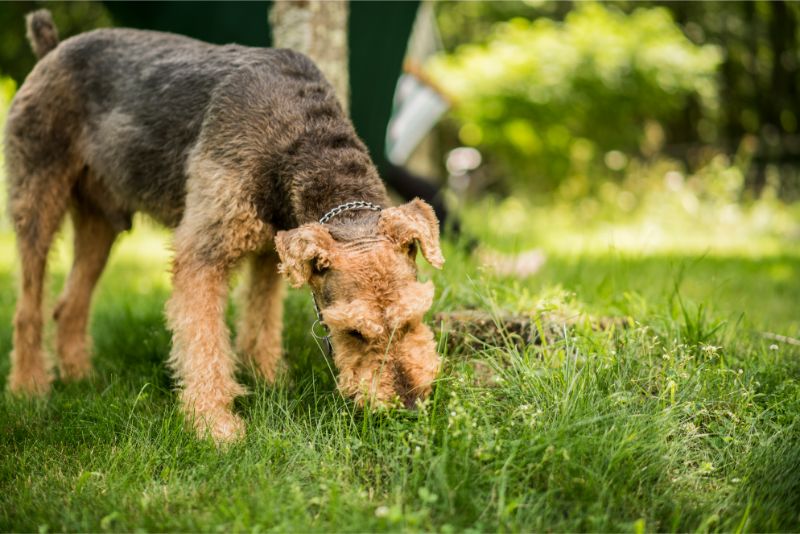
Has your pet ever eaten anything you don’t consider to be edible? Those of us with dogs, and some cats, can attest to this activity. And most of the time, our reaction is one of dismay, bewilderment, or even disgust. Unfortunately our pets just don’t seem to mind our protests, no matter how vehement!
Pica is the consumption of non-food substances. Coprophagy, the technical term for the eating of feces, is one of the most common forms of pica in dogs. Both coprophagia and pica in general can cause problems for pets, and sometimes are the result of an underlying medical condition.
West Park Animal Hospital gets questions about pica in pets often, so we thought we’d dig in (ahem) to this topic.
The Pica Problem
With pica, a pet eats inedible objects such as toys, rocks, grass, and sticks. Cats are more likely to consume kitty litter, string, dental floss, and clothing.
The problem with pica is that the items consumed can cause serious blockage in the digestive tract. These items may either get tangled in the sensitive intestine, or be unable to pass, resulting in major illness followed by emergency surgery or endoscopy.
Signs that your pet may be experiencing a GI blockage include:
- Vomiting
- Diarrhea
- Straining to pass stool
- Loss of appetite
- Drooling
- Lethargy
What Causes Pica in Pets?
Most cases of pica in pets are behavioral in nature. Still, it’s important to rule out any medical conditions such as malnutrition, liver disease, anemia, and parasites. Once we know your pet is eating non food items for behavioral reasons, we can start to look at causes and prevention.
Common behavioral reasons for pica include:
- Boredom
- Learned behavior
- Stress or anxiety
- Fear of punishment (in the case of stool eating, eliminating the evidence of an accident in the house may help the dog avoid being punished)
In most cases, pica does not go away on it’s own. It’s often a compulsive behavior, regardless of how it started or the reasons for it.
Treatment and Prevention of Pica
If there isn’t an underlying medical condition, the following measures can be taken to help prevent pica and treat the behavioral issue.
- Make sure your pet is getting plenty of exercise and mental stimulation. Ask us about your dog’s breed, age, and lifestyle for recommendations. Most dogs need at least 60 minutes of exercise per day – hunting and sporting breeds need much more.
- Consider environmental enrichment such as food puzzles, games, and a dog walker if you are away from home a lot to decrease boredom
- Eliminate access to objects that your dog may eat
- Consider training your dog to wear a basket muzzle, if she eats objects in the yard. Never leave a muzzled dog unattended.
- Leash walk your dog and distract him from eating objects or poop with treats and praise. Teach him the “leave it” command.
- Try covering the objects with a bitter apple spray or cayenne pepper.
- Provide lots of safe toys and chewing objects that your pet can’t swallow.
- If your pet continues to eat foreign objects, consider a referral to a veterinary behaviorist who can help you get to the root of your pet’s behavior
In most cases, the treatment and prevention of pica will be an ongoing project. Follow up visits may be necessary. However, prevention is certainly preferable compared with life-threatening illness and emergency surgery (and recovery) to remove foreign material from your pet’s digestive tract.
If you have questions about your pet eating foreign objects or want to discuss their behavior, please don’t hesitate to reach out to us. West Park Animal Hospital is here for you!
The post Things Dogs Eat: The Problem With Pica in Pets appeared first on West Park Animal Hospital Blog.

